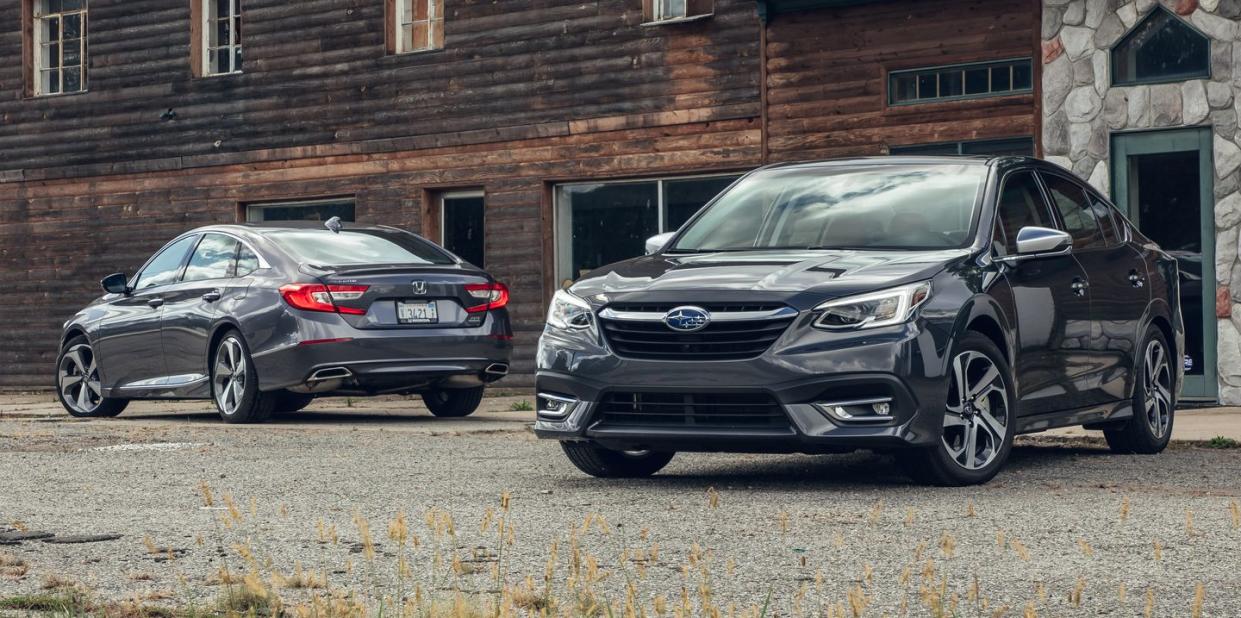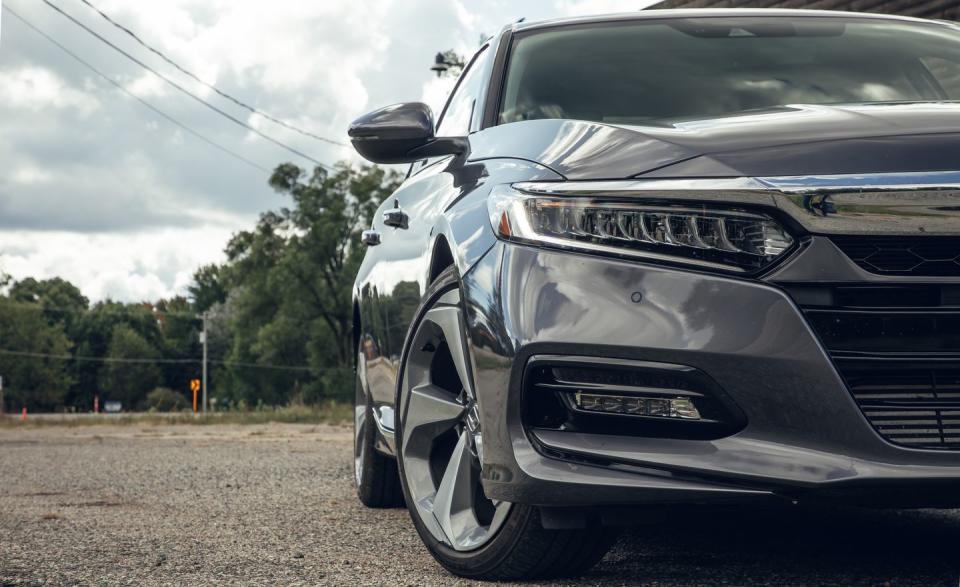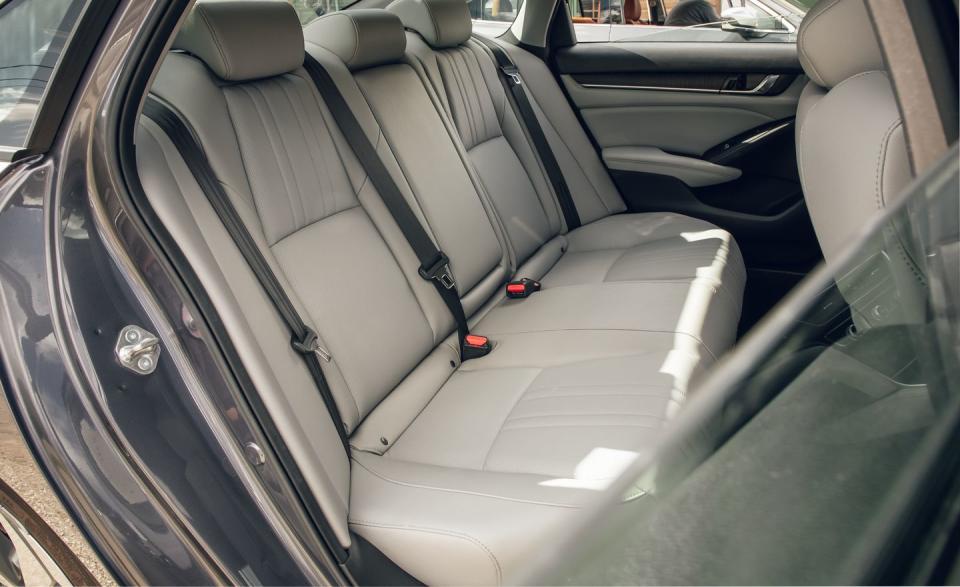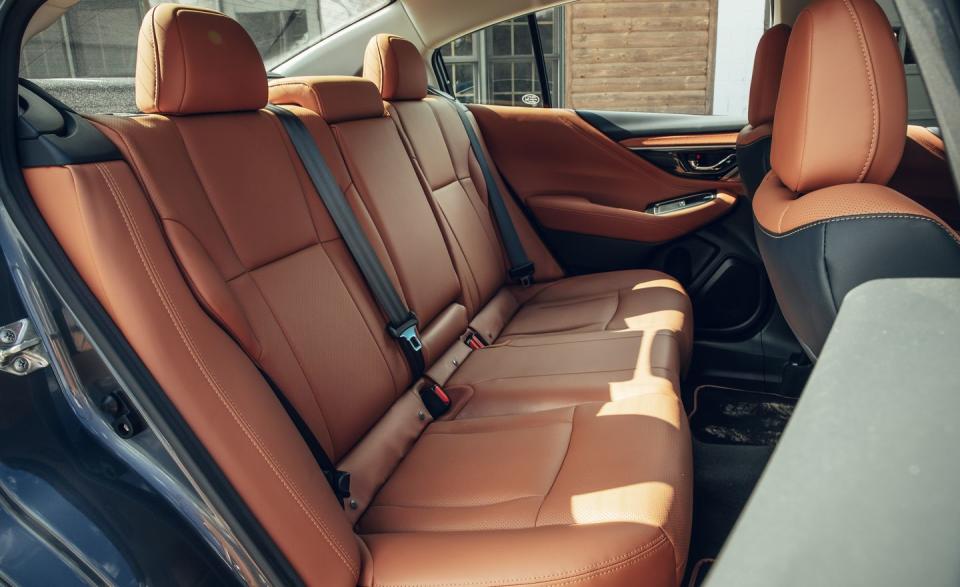2020 Subaru Legacy vs. 2019 Honda Accord: Which is the Best Family Sedan?


While the mid-size family sedan segment isn’t nearly as hot as it used to be, largely thanks to the stifling popularity of crossovers and SUVs, Americans still buy millions of these transportation appliances ever year. The Honda Accord, last redesigned for 2018, has been our favorite of the bunch seemingly since dinosaurs walked the Earth. The Honda's latest challenger, the sixth-generation Subaru Legacy, however, has a lot to offer, not the least of which are standard all-wheel drive and a new turbocharged engine option. But does the Legacy bring a strong enough combination of style, space, driving enjoyment, and value to actually challenge the Accord as the king of the heap?
The Matchup
Built in Indiana, the new-for-2020 Legacy makes the switch to Subaru’s Global Platform that underpins its smaller Impreza and Crosstrek models. It’s about two inches longer than before, but its wheelbase remains the same at 108.3 inches. The 2020 Accord is assembled in Ohio and carries over largely unchanged from our 2019 test vehicle. It’s also significantly larger than its new rival. At 192.2 inches, it’s roughly two inches longer than the Subaru, and its 111.4-inch wheelbase stretches longer than any in the class. As a result, the Honda offers significantly more rear-seat legroom than the still-spacious Legacy, not to mention the largest trunk in the segment at 17 cubic feet.

For this test we gathered the top trim levels of each, the Legacy Touring XT and the Accord Touring. Both are powered by turbocharged four-cylinders and cost about the same, with as-tested prices around $37,000. The Legacy Touring XT’s 260-hp 2.4-liter flat-four is backed by a continuously variable automatic transmission, or CVT. Although we still prefer a conventional automatic, Subaru’s CVT is one of the industry's best, featuring eight virtual gear steps, paddle shifters on the steering wheel, and relatively lively responses. Honda also employs a CVT in Accords fitted with the standard 192-hp turbo 1.5-liter inline-four. But higher trims with the optional 252-hp turbo 2.0-liter for, like our 2018-model-year test car, get a conventional and tightly geared 10-speed automatic that’s always quick to downshift for bursts of power. What's more, you also can get an Accord Sport model with either engine mated to a six-speed manual, which is unique in this class.
On the Road
It's clear after only a few miles on Michigan's back roads that the Accord is the quicker and sportier of these two sedans. The Honda weighs about 350 pounds less than the Subaru, and it feels lighter and more responsive over undulating two lanes. The Accord's suspension is tuned a touch more firmly than the Legacy's, and it rides on wider 19-inch Michelin all-season tires that serve up substantially more grip than the Subie's 18-inch Yokohamas. Conversely, the quiet and plush Subaru excels at ride comfort, even over the roughest patches of pavement, although the Accord is plenty compliant in this regard as well.

With its stiffer chassis and newfound cabin isolation, the Legacy emits a more upscale and substantial feel than before. As with the Honda, its doors now close with a solid thunk, and its interior is nicely hushed. Although its larger boxer engine is slightly more audible at idle than the Honda’s inline-four, we recorded the same 69 decibels of noise in both sedans at a 70-mph cruise. Despite its softness, the Legacy’s dynamics are well sorted with good balance, mild if safe understeer in corners, and decently quick steering. It takes a nice set in longer, faster bends and feels planted and relaxed on the Interstate. The Legacy XT also is significantly more efficient than last year’s version with its optional flat-six engine, now posting a 27-mpg EPA combined estimate that betters the Accord 2.0T’s by 1 mpg.
The Honda is considerably more athletic and rewarding to drive, however, especially with its Sport drive mode activated, which adds weight to the steering, reprograms the transmission to hold gears longer, and tightens the engine's throttle response. The Honda’s powerplant may be smaller in displacement, but it is smoother and more refined in character than the Subie's, and it revs to a higher 6800-rpm redline, adding to the Accord’s sportier demeanor.

Despite the Subaru’s all-wheel-drive traction off the line, as well as greater horsepower and torque outputs, the Accord 2.0T outruns the Legacy XT on the road. At the test track the Honda sprinted to 60 mph in an impressive 5.5 seconds and through the quarter mile in 14.1-seconds at 102 mph, leaving the Subaru more than a half-second behind. By 100 mph, the acceleration gap stretches to more than two seconds. The Subaru isn’t slow; the Accord is just a rocket of a family car. Adding to the Honda's athletic chops are its solid 0.88 g of grip on the skidpad versus the Subaru's lowly 0.80 g. The Accord also stops from 70 mph in 170 feet, six feet shorter than the Legacy. Shoppers concerned about the front-wheel-drive Accord's inherently poorer traction in slippery conditions versus the all-wheel-drive Legacy should look no further than a good set of winter tires, which helped our long-term 2018 Accord 2.0T slog through Michigan's dreary months with little issue.

The Inside View
Inside, Subaru has taken the Legacy’s interior up several notches, and it is more comfortable and better appointed than before. The Legacy’s interior design is clean, simple, and upscale in presentation, with our test car featuring aluminum-looking trim, contrast stitching, and a smattering of chrome around the shifter and window switches. The seat heaters are a bit weak compared to the Honda's, but its thrones are well-shaped and luxuriously padded. Subaru's massive vertically oriented infotainment touchscreen dominates the front of its cabin and is relatively easy to interface with. Subaru didn’t go overboard with the electronics, though, keeping the Legacy's ergonomics solid with a conventional shift lever, knobs to tune the audio system, and redundant buttons for temperature adjustments.

With a mix of wood, aluminum trim, and premium-feeling knurled knobs, the Accord Touring's cabin remains one of the best interiors in this class. It’s comfortable, spacious, and attractive. Build quality and fit and finish are still a half step above the Subaru's, but the gap has narrowed. We still aren't fans of the Accord’s push-button shifter arrangement, although the setup does conserve precious space on the center console. Both of our test cars feature rear air-conditioning vents and heated rear seats, but the Subaru also gives rear-seat riders a couple USB ports. Both sedans come with a full suite of standard electronic driving aids, including adaptive cruise control and automated emergency braking.
The Bottom Line
The new 2020 Subaru Legacy Touring XT is mighty impressive and an improvement over its predecessor in nearly every way. It’s now more comfortable and refined, and it offers one of the smoothest rides in the segment. It also performs well, remains the only mid-size sedan with standard all-wheel drive, and it offers the largest touchscreen in the class. Unfortunately, its exterior design, as well as much of its on-road behavior, slipped right past conservative and landed on boring.

We've said many times that the Honda Accord is America’s best sedan, and it's not for nothing that the Accord has won more 10Best awards than any other nameplate. It still is the best of its kind, delivering more style, space, and performance than the Subaru—and numerous other vehicles, many of which cost considerably more—for the same money. The Accord's deftly tuned dynamics also make it a driver's car, with better acceleration, more grip, and sharper responses than the latest Subaru, not to mention every other car in this class. The Honda Accord isn’t the perfect automobile, but the latest example is pretty darn close.
You Might Also Like

